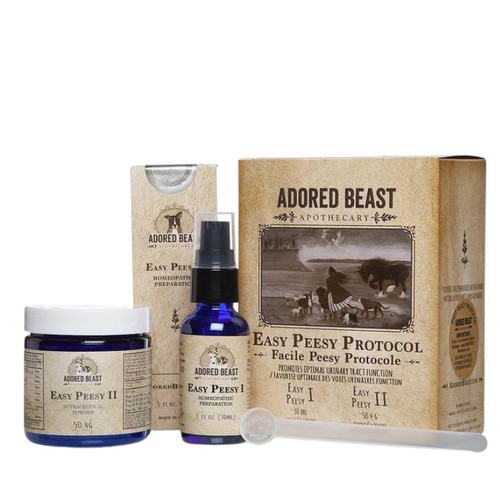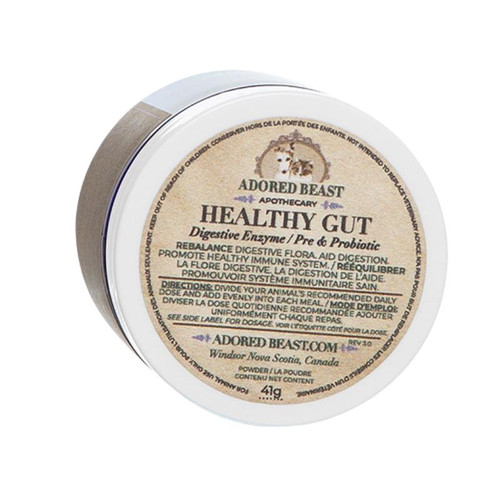Yeast overgrowth is a common condition many dogs suffer from and is a significant factor for dogs developing leaky gut syndrome.
Yeast is normally present in small numbers in your canine's gut and aids in the digestion of food. If an overgrowth of yeast is allowed to populate, your dog will develop a fungal-like infection. When yeast becomes overgrown it causes inflammation in the canine gut and can cause the cells to become stretched and damaged, which in turn leads to leaky gut syndrome.
Yeast infections, itchy skin, red feet/licking paws constantly, ear infections, yeast build up in wrinkles and skin folds are all signs of yeast overgrowth. Suppose your dog smells like stinky cheese or dirty socks; that strongly indicates yeast.
Yeasty Beast Protocol, by Adored Beast Apothecary, is helpful to start fighting your dog's yeast buildup. Yeasty Beast Protocol will help kill the yeast, then follow up with the Leaky Gut Protocol to help repair the yeast's damage!
Yeasty Beast protocol helps combat yeast and supports the immune system, while avoiding an intense Herxheimer reaction (toxic yeast die-off) which can look like the yeast is getting worse.
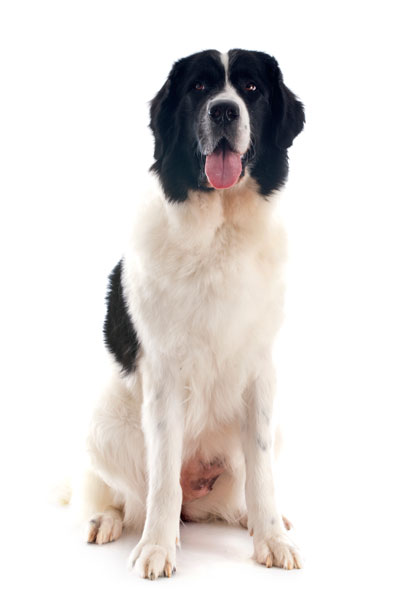
Yeasty Beast Protocol contains 3 supplements
(Liver Tonic, Yeasty Beast I, and Yeasty Beast II)
It is important to remove or decrease starches, sugars and carbohydrates in your dog's diet for a few weeks prior to treatment and during treatment.
Liver Tonic
helps to regenerate health liver cells, boost the liver's ability to filter toxins,
and mediate the proper function of histamines
- Taraxacum officinalis (Dandelion Root)
- Chelidonium majus (Greater Celandine)
- Carduus marianus (Milk Thistle)
- Berberis vulgaris (Barberry)
Yeasty Beast I
helps with itch, detoxification, and toxin removal. This combination of ingredients may also be beneficial for supporting overall immune health
- Homeopathic Sulfur 30x
- Homeopathic Barberry 12c
- Homeopathic Nux Vomica 12c
- Homeopathic Echinacea 12c
- Homeopathic Graphites 12c
- 13% Alcohol Base
Yeasty Beast II
targets yeast while avoiding an intense Herxheimer reaction (toxic yeast die-off), which can look like the yeast is getting worse
- Enzyme Blend
- Pau D’Arco
- Magnesium Caprylate
- Medium Chain Triglycerides
- Saccharomyces boulardii 20 billion cfu

Build a Bowl
Every dog is special. But it’s not just their personality. Every dog has unique nutrition needs based on their breed, size, shape, activity level and many other factors. The best way to help your dog be the best version of themselves is to build a healthy, balanced bowl that’s a combination of grains, vegetables, proteins, hydrators and supplements that are specific to your pet.
When you build a bowl here at Volhard, you will start with the choice of foundation mix. For better planning, it’s helpful to think about the dog you plan to feed and their issues first. This is where you can determine the "personality" of your bowl.
Build-a-Bowl is a fun way to find out what the nutritional value is in a bowl of Volhard! Then you will be asked to add a protein for a delectable super-powered meal for your dog!
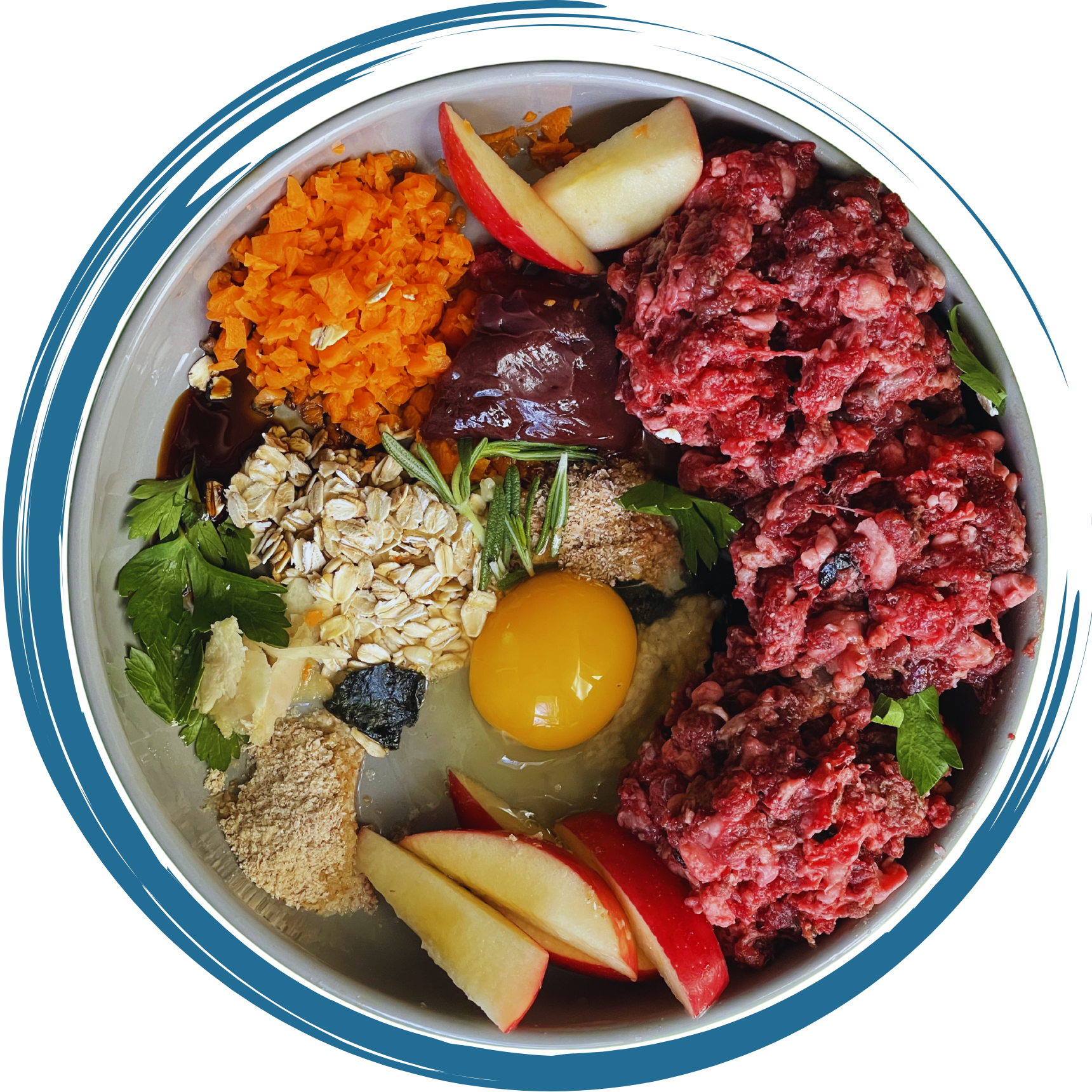
STEP 1
Diet
Change diet to eliminate as many starches, sugars and carbohydrates as possible – this will initiate the early stages of yeast starvation and eventually create a die-off.
STEP 2
Liver Tonic
Can be given during or after mealtime.
Administer twice per day according to your pet’s weight. Refrigerate after opening.
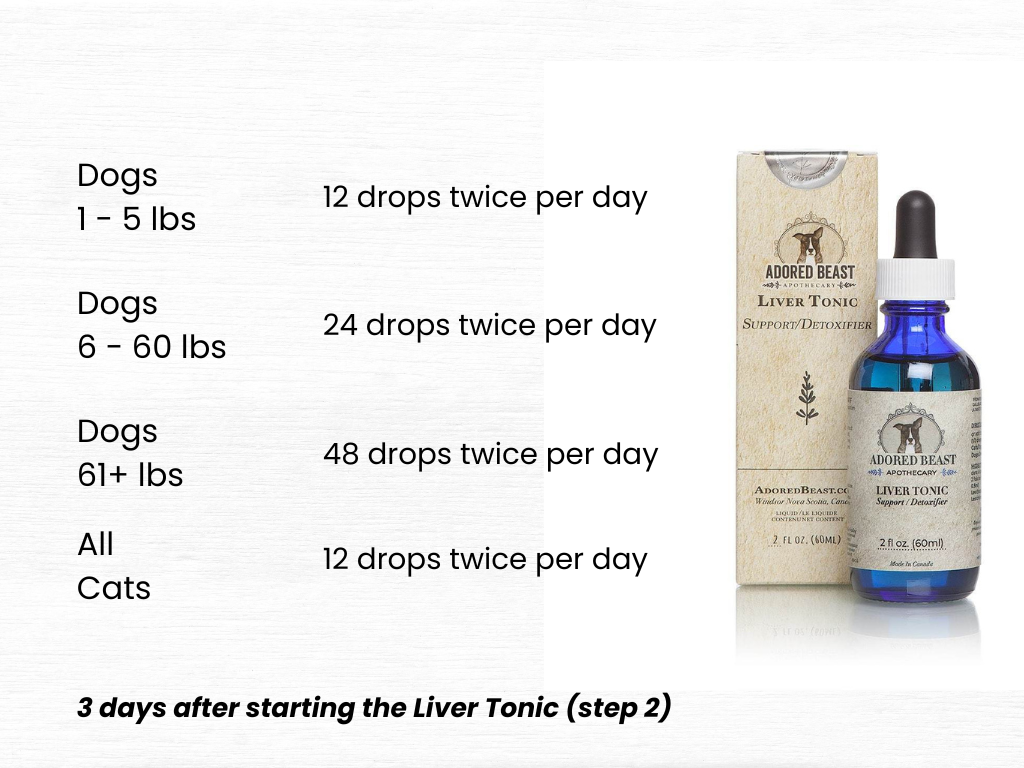
STEP 3
Yeasty Beast I
Add 4 pumps to a small amount of food twice per day for up to 14 days, then once per day as needed.
Hold the remaining contents on reserve to resume if needed.
*If at any time during the 14 days the condition seems to worsen, please discontinue. If the 14 days is complete and the animal’s condition seems to regress after stopping. You can resume dosing once per day for up to 7 days.
3 days after adding the Yeasty Beast I (step 3)
STEP 4
Yeasty Beast II
Give the recommended dose once (1x) per day according to your dog’s weight in a small amount of plain unsweetened yogurt, kefir, raw milk, or goat milk (organic if possible).
This step should ideally happen 2 hours before or after meals/food. Use the entire contents of the jar.
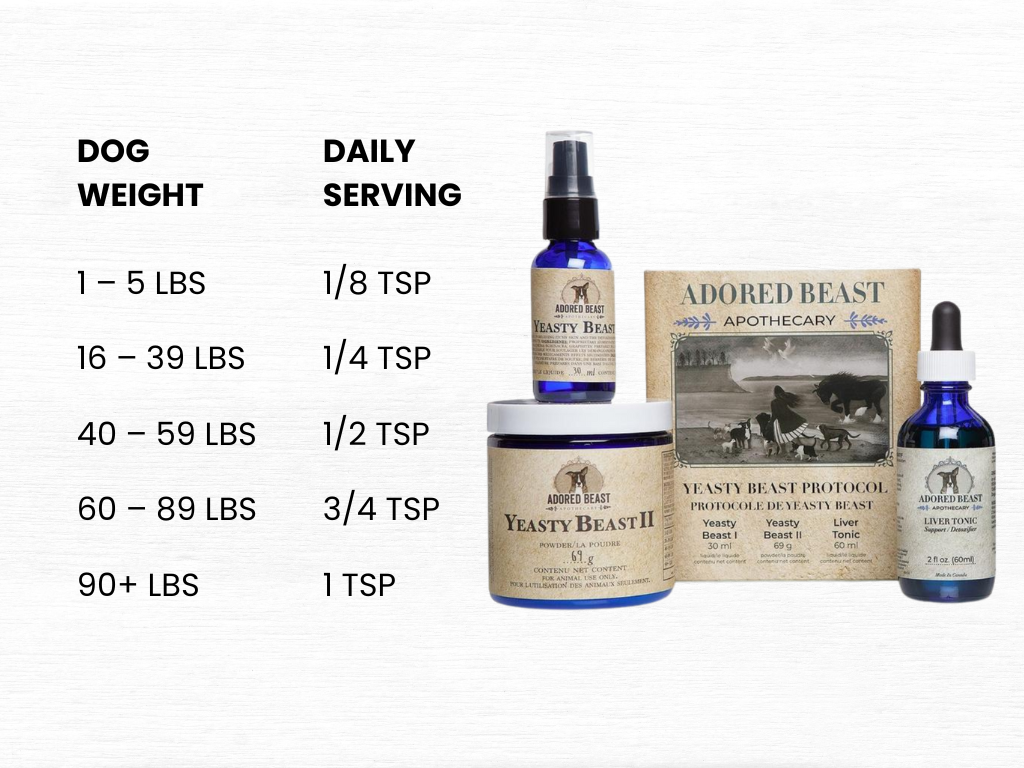
Safe use in pregnant animals or animals intended for breeding has not been proven. If animal’s condition worsens or does not improve, discontinue use and consult your veterinarian.







